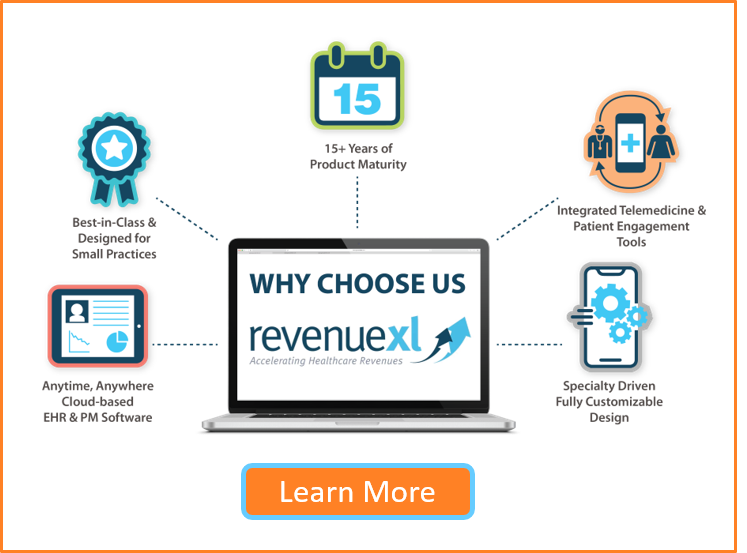Introduction
Healthcare practices today face mounting financial challenges, from managing complex billing processes to ensuring timely payments. Administrative burdens, billing errors, and payment delays often strain cash flow and disrupt operations. Medical invoicing software offers a powerful solution to address these challenges by automating invoicing tasks, improving payment accuracy, and optimizing revenue management.
In this blog, we’ll cover:
- What medical invoicing software is.
- How it differs from medical billing software.
- When to choose one over the other.
- The key benefits of adopting medical invoicing software.
For practices seeking comprehensive financial management tools, RevenueXL’s Medical Billing Software provides a robust solution.
What is Medical Invoicing Software?
Medical invoicing software is a specialized tool designed to streamline the creation, management, and tracking of medical invoices. It simplifies the billing process by automating invoice generation, tracking payments, and sending reminders for overdue balances. Unlike general invoicing tools, medical invoicing software is tailored to the unique needs of healthcare practices, ensuring compliance with regulations like HIPAA and integrating with healthcare systems such as EHRs and Practice Management Software.
At its core, medical invoicing software ensures every service provided is billed accurately and payments are received promptly. It reduces reliance on manual tasks, minimizes errors, and provides visibility into a practice's financial health.
To learn how practice management tools complement billing workflows, explore RevenueXL’s Practice Management Software.
Medical Invoicing Software vs. Medical Billing Software
While medical invoicing software focuses primarily on invoice creation, tracking, and payment management, medical billing software covers the entire revenue cycle management (RCM) process, including insurance claims submission, denial management, and detailed financial reporting.
Key Differences:
- Medical Invoicing Software: Best suited for smaller practices or those primarily handling patient self-payments. It focuses on accurate invoicing, payment reminders, and integrating with payment gateways.
- Medical Billing Software: Ideal for larger practices or organizations with complex billing requirements, including insurance claims management, detailed analytics, and robust reporting tools.
In essence, invoicing software handles the "final step" in billing, while billing software manages the "entire journey" from service provision to payment collection.
For deeper insights into revenue cycle processes, check out The Role of Payment Posting in Medical Billing.
When to Choose Medical Invoicing Software Over Medical Billing Software
The choice between medical invoicing and billing software depends on the size, structure, and financial workflow of your practice.
- Choose Medical Invoicing Software if your practice primarily deals with patient self-payments, operates on a smaller scale, or needs a cost-effective solution focused on invoicing and payment tracking.
- Choose Medical Billing Software if your practice processes high volumes of insurance claims, requires robust financial reporting, or manages complex billing workflows across multiple providers.
Some advanced solutions combine both functionalities, offering an all-in-one platform for practices needing flexibility and scalability.
To explore integrated solutions, visit RevenueXL’s EMR Software.
Key Benefits of Medical Invoicing Software
Medical invoicing software isn’t just about sending invoices—it’s about building a seamless payment workflow that reduces errors, accelerates revenue collection, and enhances transparency.
Improved Payment Efficiency
Automated invoice generation and reminders ensure timely payments from both patients and insurance providers. Manual follow-ups are minimized, saving time for administrative staff.
Reduced Administrative Burden
By automating routine tasks like payment reminders and invoice generation, staff can focus on higher-value activities, such as patient care and customer service.
Enhanced Accuracy
Invoicing errors, whether from manual data entry or missed charges, can significantly impact revenue. Medical invoicing software reduces such errors through automated calculations and standardized invoice templates.
Financial Transparency
Patients receive clear and itemized invoices, reducing confusion and disputes. Real-time payment tracking provides visibility into outstanding balances and revenue flow.
Integration with Other Systems
Many invoicing tools integrate with EHR systems and payment gateways, creating a seamless billing-to-payment workflow.
For more insights into enhancing transparency with technology, check out The Benefits of Patient Portals.
How Medical Invoicing Software Boosts Revenue
Medical invoicing software plays a critical role in maximizing revenue by addressing common bottlenecks in the payment lifecycle.
By automating payment reminders, practices experience fewer overdue payments. Clear invoices minimize billing disputes, leading to faster payment resolutions. Furthermore, with fewer manual errors and better tracking, revenue leakage is reduced, ensuring every earned dollar is accounted for.
Additionally, the software’s analytics tools offer valuable insights into revenue trends, outstanding payments, and cash flow—empowering practices to make informed financial decisions.
For a glimpse into the future of billing and automation, explore AI in EHR Systems.
Final Thoughts: Choosing the Right Solution for Your Practice
Selecting the right software depends on your practice’s financial workflows, billing complexity, and growth plans. Smaller practices with a focus on direct payments might benefit from standalone medical invoicing software, while larger practices with insurance-heavy workflows might find medical billing software more suitable.
For many practices, an integrated solution that combines both invoicing and billing capabilities is the best approach.
If you're still unsure, RevenueXL offers tailored solutions to address unique practice needs.
Conclusion
In today’s healthcare landscape, managing finances efficiently isn’t just a priority—it’s a necessity. Medical invoicing software simplifies the billing process, improves cash flow, reduces administrative burdens, and enhances financial transparency. Whether you’re a small clinic looking to streamline payments or a larger organization managing complex billing, investing in the right tool can transform your revenue management processes.
Take the next step towards financial efficiency: Request a Demo Today.






